Romanesco Broccoli is becoming more popular among health-conscious consumers. It is a unique vegetable originating in Italy. Romanesco Broccoli is relatively easy to grow, requiring only moderate care and attention.
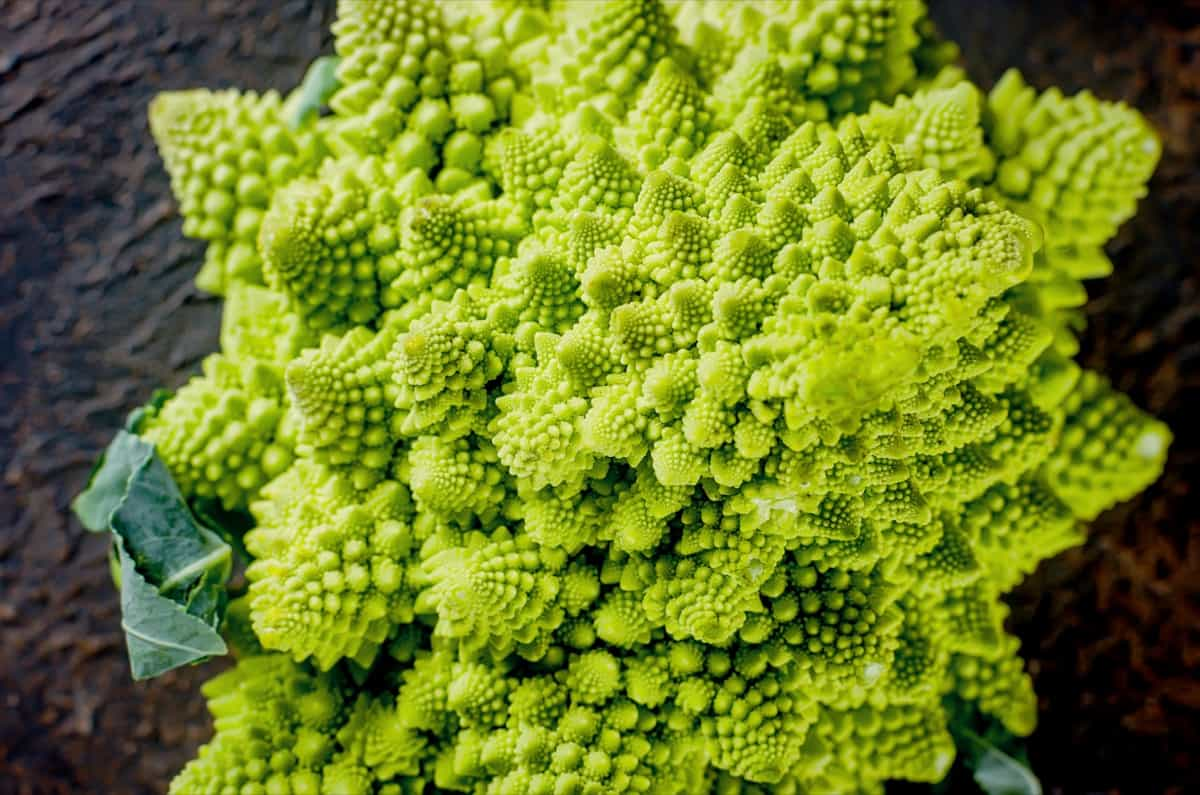
How to Start Romanesco Broccoli Farming
What is Romanesco Broccoli?
Romanesco Broccoli, also known as Roman cauliflower, is a unique type of vegetable with a distinct appearance. Romanesco Broccoli farming helps promote sustainability by reducing food waste since you can harvest smaller portions at different times throughout the season. To grow Romanesco Broccoli successfully, you must ensure that the soil is rich in nutrients and has good drainage.
Location / Light Requirements for Romanesco Broccoli Farming
- Romanesco Broccoli requires a good amount of sunlight to grow healthy and strong. The plant needs at least 3-5 hours of direct sunlight daily, so choosing the right location in your garden for planting is important.
- When choosing the spot for your Romanesco Broccoli, look for an area with plenty of sunshine throughout the day. Avoid areas with too much shade or high winds, damaging the plants and stunting their growth.
- If you don’t have enough space, consider planting Romanesco Broccoli in containers on a sunny balcony or patio. This way, you can still enjoy fresh and tasty homegrown produce without needing a large outdoor garden space.
Soil and Other Requirements to Start Romanesco Broccoli Farming
- Starting your own Romanesco Broccoli farm may seem intimidating, but with the right resources and patience, it can be a rewarding experience. The main step is to find an ideal location for planting. Look for a spot in your garden that receives sunlight daily.
- Once you have found the perfect location, it’s time to start planting. Begin by sowing seeds half an inch deep in seed trays indoors or in a greenhouse.
- When planting outdoors, ensure that you space out each plant by two feet apart so that they have enough room to grow and spread out. Be mindful of the soil’s pH level; Romanesco Broccoli thrives best in well-draining soil with a pH between 6.0 and 7.5. This will ensure that the plants receive enough energy from the sun to grow and produce healthy heads.
- If your soil’s pH level is too low or too high, you may need to amend it by adding lime to raise the pH value or sulfur to lower it. Getting this step right is important since nutrient uptake can be affected if the soil’s pH level is off.
- Choosing the right location for your Romanesco Broccoli plants is crucial for their success. Providing ample sunlight and ensuring they’re planted in suitable soil conditions will give them a strong foundation for growth and yield delicious results come harvest time.
In case you missed it: How to Start Broccoli Farming in USA: A Step-by-Step Guide to Planting to Harvesting
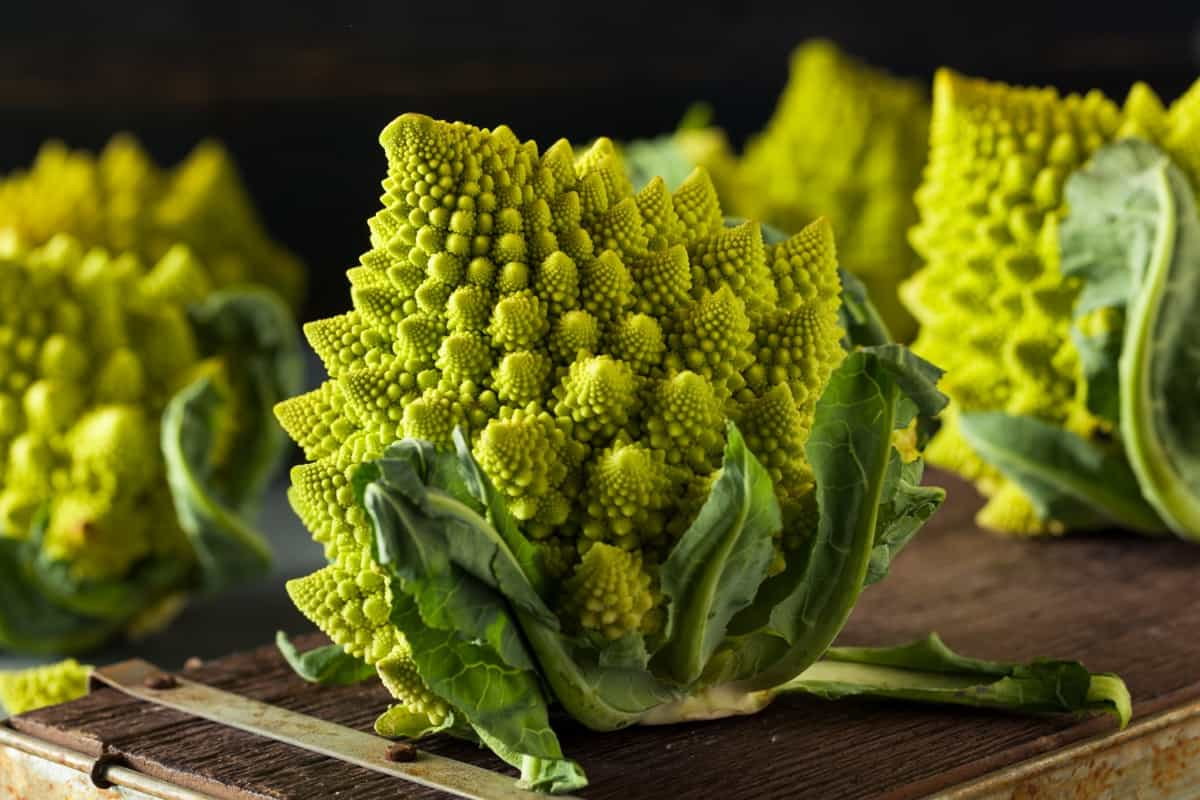
Romanesco Broccoli Propagation
Propagation is an important step in starting your Romanesco Broccoli farm. The best ways to propagate this unique plant are using seeds or transplanting starts purchased at a nursery. Regardless of your chosen propagation method, ensuring that your soil has proper drainage and enough nutrients for healthy growth is important.
Romanesco Broccoli Planting
- Planting Romanesco Broccoli seeds is a crucial step in the farming process. Start by planting the seeds ½ inch (1 cm) deep in seed trays filled with nutrient-rich soil. Keep them indoors or in a greenhouse until they reach 4 to 6 inches tall.
- Transplant the seedlings into your garden bed when they have grown big enough, and make sure you space out each plant about 2 feet apart. Although this may seem like excessive space, it’s essential for optimal growth and development.
- Spacing out the plants also helps prevent overcrowding, which can lead to stunted growth and increased susceptibility to pests and diseases. The additional spacing ensures adequate airflow and sunlight penetration through all parts of the plant.
- As soon as you transplant Romanesco Broccoli starts into your garden, be vigilant about watering them regularly until their roots are well established. Providing ample water will help ensure healthy root development, producing strong plants that yield quality produce.
Best Companion Plants for Romanesco Broccoli
One great companion plant for Romanesco Broccoli is dill. Dill attracts beneficial insects like ladybugs and lacewings that help control pests and pollinate your garden. Artichokes are also an excellent choice for planting near Romanesco Broccoli. Chard, Beet, Carrot, Celery, Cucumber, Spinach, Beans, Oregano, Peas, Potatoes, Sage, and Thyme are other fantastic options for companion planting with Romanesco Broccoli.
In case you missed it: Top 16 Steps/Ways to Boost Broccoli Yield: How to Increase Production, Size, and Quality
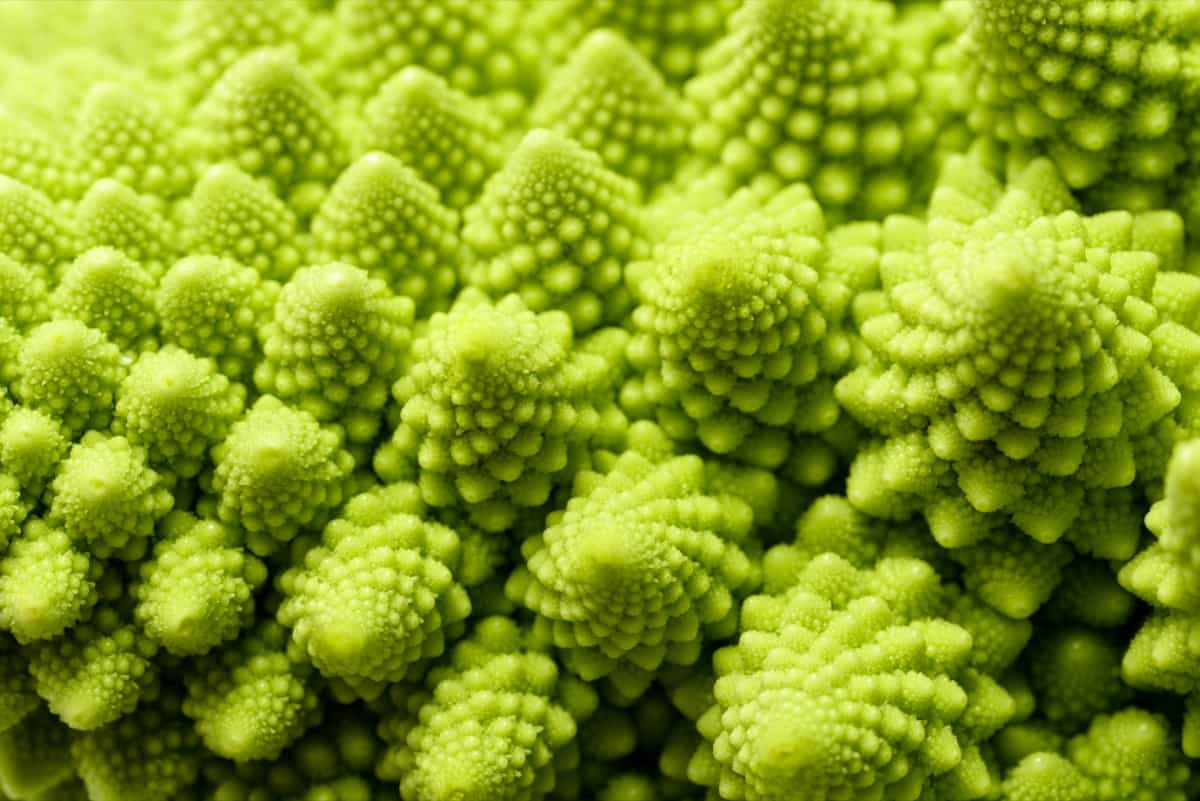
Fertilizer Requirement for Growing Romanesco Broccoli
- It provides the necessary nutrients for the plant to grow and produce healthy heads. Before planting, preparing the soil with a balanced fertilizer containing nitrogen, phosphorus, and potassium is recommended. This will ensure the soil has enough nutrients for the plants to absorb throughout their growth. During the growing season, it’s essential to apply fertilizer at specific intervals.
- It’s crucial not to over-fertilize, as this can lead to excessive leaf growth instead of head production. It’s also important to water thoroughly after applying fertilizer because it helps distribute it evenly in the soil.
- Organic fertilizers like compost, bone meal, or fish emulsion are good options for those who prefer natural methods of feeding their plants, while synthetic fertilizers like ammonium nitrate or urea can provide faster results but may have negative environmental impacts if used excessively. Proper fertilization is key to a bountiful harvest of healthy and delicious Romanesco Broccoli.
Pruning Requirement for Promoting Vigorous Growth and Getting Higher Yields
- Pruning is an essential aspect of growing Romanesco Broccoli. It involves cutting off some parts of the plant to promote growth and increase yields. Pruning should be done when the plants are young and healthy, preferably after developing 4 or 5 leaves.
- You may need to prune away dead or diseased leaves regularly. Always use clean and sharp tools when pruning your plants to prevent infection.
- Pruning also involves removing any flower heads that develop before they have fully matured since this can divert valuable nutrients away from developing Broccoli heads. Regular pruning helps keep Romanesco Broccoli healthy while promoting vigorous growth and higher yields come harvest time.
How Long Does It Take for Romanesco Broccoli to Grow?
Romanesco Broccoli is a unique and nutritious vegetable that can be easily grown. You can grow this plant in your backyard or on a larger farm with proper soil conditions, adequate sunlight, and the right planting techniques. Those beautiful heads may take up to 80-100 days to fully mature.
Pests and Diseases Management for Romanesco Broccoli Farming
- As with any crop, Romanesco Broccoli is susceptible to pests and diseases. One common pest that affects this plant is the cabbage worm. These small green caterpillars can quickly devour your plants if not controlled.
- Another problem that growers often encounter with Romanesco Broccoli is pests such as aphids or cabbage worms. These insects can quickly damage this plant’s delicate leaves and flowers if not dealt with promptly. Use can use natural companion planting to prevent these pests from invading your crop.
- In addition to insect infestations, fungal diseases such as downy mildew or root rot can threaten your crop’s health. To avoid these issues, ensure adequate plant drainage by avoiding over-watering them.
- Practicing good sanitation in your garden is important to prevent these pests from attacking your crops. Remove any dead or decaying material promptly, and dispose of it away from your growing area.
- You can also use organic insecticides like neem oil or insecticidal soap to control infestations before they become a major problem.
- Diseases like powdery mildew and clubroot can also affect Romanesco Broccoli. Powdery mildew appears on leaves, while clubroot causes root swelling, leading to wilted plants.
- Preventing these diseases involves maintaining proper airflow around the plants by spacing them correctly and ensuring adequate soil drainage through watering practices. Crop rotation every season will also help prevent disease build-up in the soil.
In case you missed it: Growing Broccoli in Greenhouse – Planting, Farming
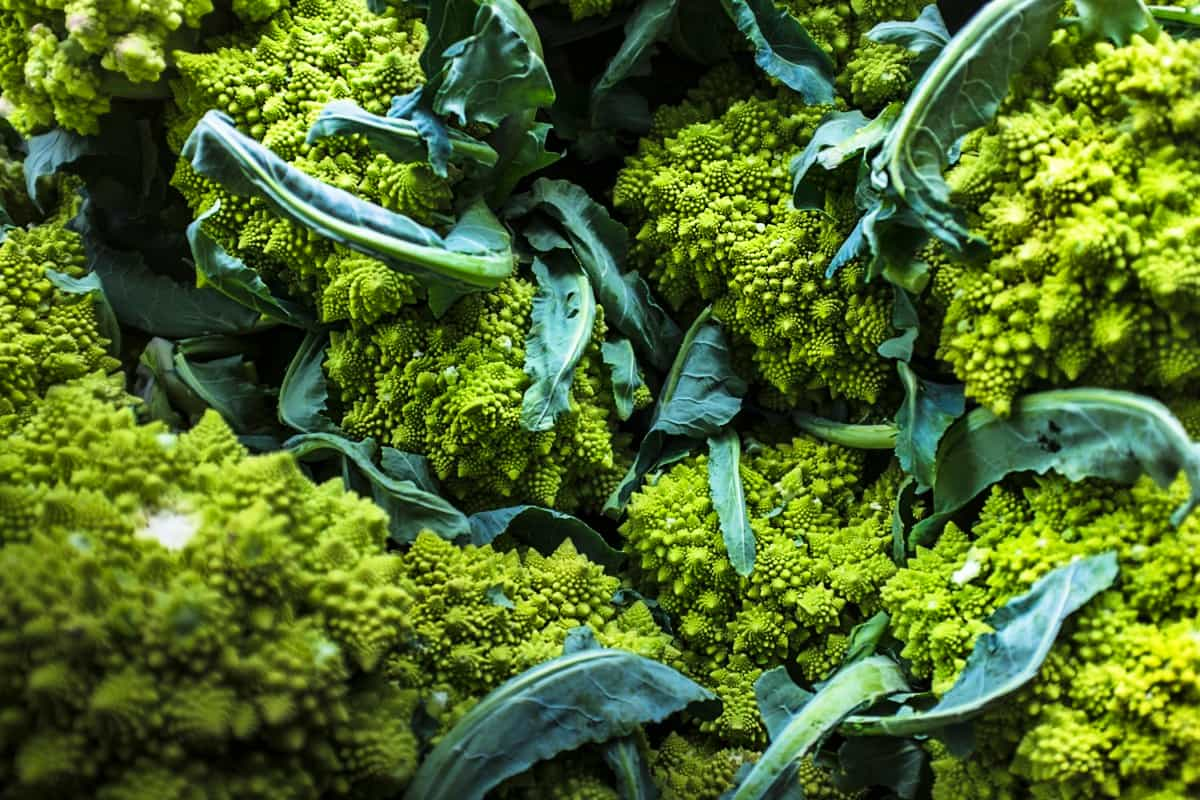
Romanesco Broccoli Growing Problems
Romanesco Broccoli is a fascinating and delicious vegetable, but it can face growing problems like any plant. One of the most common issues with Romanesco Broccoli is that it can slowly mature. You may need extra care and attention to ensure your plants are healthy and properly developing.
One issue many growers face when growing Romanesco Broccoli is the failure to form heads properly. This could be due to several factors, such as inadequate light levels during seedling growth or lack of proper nutrition in the soil. If your plants aren’t forming heads correctly, try adjusting their environment before resorting to drastic measures like replanting.
Growing Broccoli Romanesco in Pots
- Growing Romanesco Broccoli in pots is a great option for those with limited space or who live in an area with poor soil quality. It’s also a convenient way to move your plants around if you need to adjust their exposure to sunlight.
- When choosing your pot, ensure it has drainage holes at the bottom to ensure proper water flow. Fill the pot with well-draining soil and add some organic fertilizer for nutrients.
- Ensure your plants receive at least six hours of direct sunlight per day and water them regularly, making sure not to overwater as this can lead to root rot.
- Consider adding stakes or trellises for support as your Romanesco Broccoli grows taller. This will prevent bending or breaking under the weight of its head. Harvesting Romanesco Broccoli from pots is similar to harvesting from garden beds.
Why is Romanesco Broccoli Not Forming Heads?
One common problem you may encounter when growing Romanesco Broccoli is the failure of the plant to form heads. There are several reasons why Romanesco Broccoli may fail to form heads. One reason could be insufficient sunlight exposure or inconsistent watering frequency. Ensure that your plants receive at least six hours of sunlight daily, and water them regularly to keep the soil moist but not too wet.
In case you missed it: Impact of Blockchain Technology and ChatGPT on Agriculture
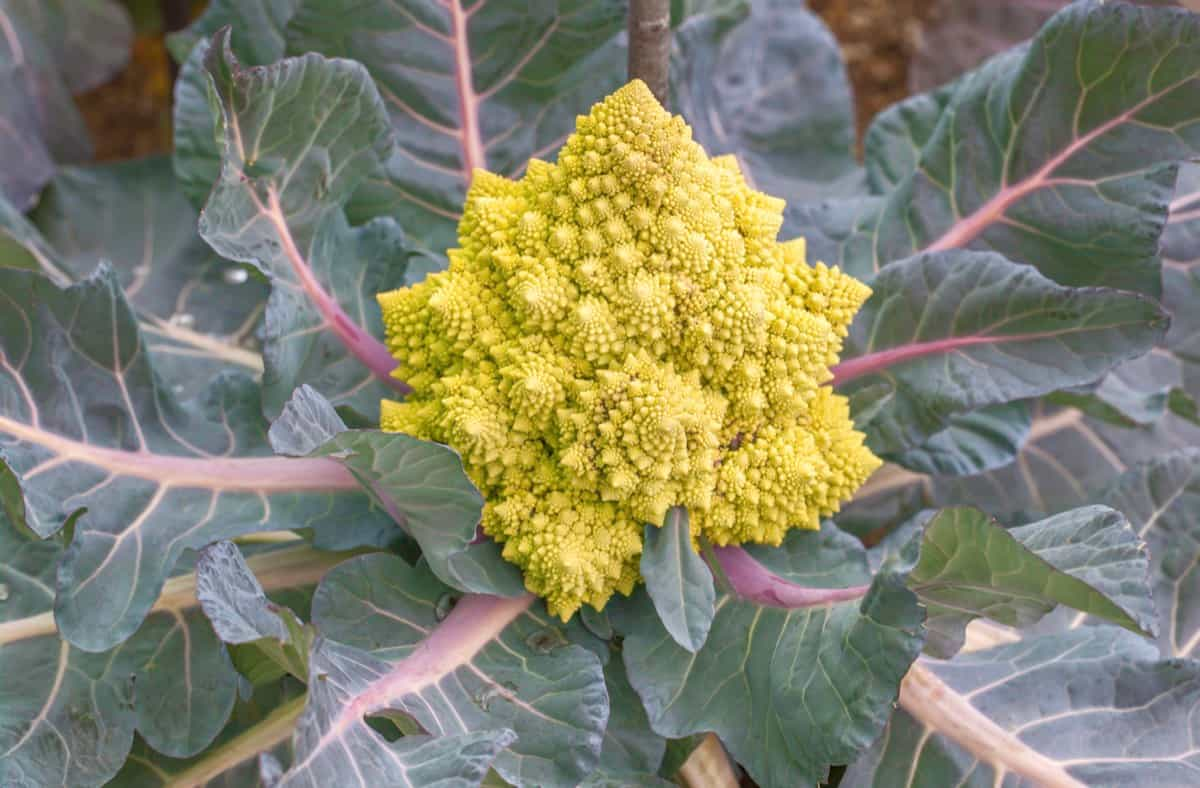
Another possible cause is nutrient deficiency or imbalanced soil pH levels. Ensure your soil has sufficient nitrogen, phosphorus, and potassium by fertilizing it with organic matter such as compost or manure before planting. Test your soil’s pH level using a kit from your local garden center; adjust it accordingly if necessary. Pests like aphids and cabbage worms can also damage young buds before they develop into full-grown heads. Check for signs of insect infestation regularly; treat affected plants promptly with natural insecticides like neem oil or pyrethrin-based sprays.
When and How to Harvest Romanesco Broccoli?
- The harvesting process of Romanesco Broccoli is crucial in ensuring you get the best-tasting and healthiest produce. The harvest timing is key, as picking it too early or late can affect its flavor and nutrient content. Harvesting Romanesco Broccoli is one of the most rewarding aspects of growing this unique and delicious vegetable. When it comes to harvesting, timing is key. You want to ensure you harvest at the right time so your Broccoli retains its flavor and texture.
- Keep an eye on the head formation to determine when your Romanesco Broccoli is ready for harvest. The head should be firm and compact with tightly packed buds. If you notice some buds opening up, it’s time to harvest.
- When harvesting, use a sharp knife or scissors to cut off the stem below the main head. This will encourage side shoots to form, which can lead to additional harvests later in the season. Once harvested, store your Romanesco Broccoli in a plastic bag in the refrigerator until you’re ready to use it. It can last for several days if stored properly. The heads are ready for harvest in 80-100 days from the seeds’ sowing date.
In case you missed it: Climate-Smart Agricultural Methods for More Yields and High Profits
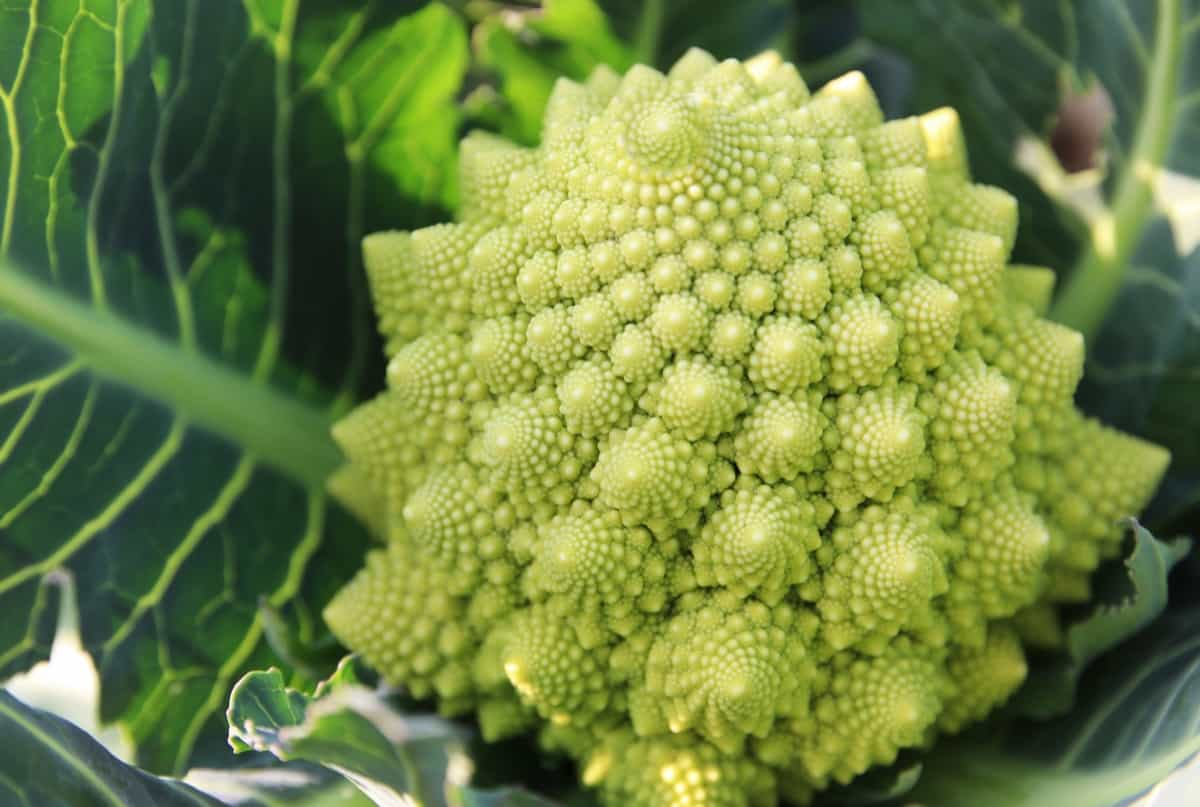
Conclusion
Romanesco Broccoli is a hardy, cool-season vegetable popular for its deeply-colored, edible leaves. It grows best in fertile, well-drained soil in a sunny location. Romanesco Broccoli farming has numerous benefits beyond providing a delicious and unique vegetable for your diet. One of the primary advantages is that it can be grown year-round, making it an excellent choice for outdoor and indoor planting.
- Economical Aquaculture: A Guide to Low-Budget Fish Farming
- 15 Common Planting Errors That Can Doom Your Fruit Trees
- How to Make Houseplants Bushy: Effective Tips and Ideas
- Innovative Strategies for Boosting Coconut Pollination and Yield
- Pollination Strategies for Maximum Pumpkin Yield
- The Complete Guide to Chicken Fattening: Strategies for Maximum Growth
- Natural Solutions for Tulip Problems: 100% Effective Remedies for Leaf and Bulb-Related Issues
- Revolutionizing Citrus Preservation: Towards a Healthier, Greener Future
- Natural Solutions for Peony Leaf and Flower Problems: 100% Effective Remedies
- Maximizing Profits with Avocado Contract Farming in India: A Comprehensive Guide
- Natural Solutions for Hydrangea Problems: 100% Effective Remedies for Leaf and Flowers
- The Ultimate Guide to Choosing the Perfect Foliage Friend: Bringing Life Indoors
- From Sunlight to Sustainability: 15 Ways to Use Solar Technology in Agriculture
- The Ultimate Guide to Dong Tao Chicken: Exploring from History to Raising
- The Eco-Friendly Makeover: How to Convert Your Unused Swimming Pool into a Fish Pond
- Mastering the Art of Delaware Chicken Farming: Essentials for Healthy Backyard Flocks
- 20 Best Homemade Fertilizers for Money Plant: DIY Recipes and Application Methods
- How to Craft a Comprehensive Free-Range Chicken Farming Business Plan
- Brighten Your Flock: Raising Easter Egger Chickens for Beauty and Bounty
- How to Optimize Your Poultry Egg Farm Business Plan with These Strategies
- Subsidy for Spirulina Cultivation: How Indian Government Schemes Encouraging Spirulina Farmers
- Ultimate Guide to Raising Dominique Chickens: Breeding, Feeding, Egg-Production, and Care
- Mastering the Art of Raising Jersey Giant Chickens: Care, Feeding, and More
- Ultimate Guide to Raising Legbar Chickens: Breeding, Farming Practices, Diet, Egg-Production
- How to Raise Welsummer Chickens: A Comprehensive Guide for Beginners
- How to Protect Indoor Plants in Winter: A Comprehensive Guide
- Ultimate Guide to Grow Bag Gardening: Tips, Tricks, and Planting Ideas for Urban Gardeners
- Guide to Lotus Cultivation: How to Propagate, Plant, Grow, Care, Cost, and Profit
- Agriculture Drone Subsidy Scheme: Government Kisan Subsidy, License, and How to Apply Online
- Ultimate Guide to Raising Araucana Chickens: Breed Profile, Farming Economics, Diet, and Care
- Bringing Hydroponics to Classroom: Importance, Benefits of Learning for School Students
- Ultimate Guide to Raising Polish Chickens: Breed Profile, Farming Economics, Diet, and Care
- Ultimate Guide to Raising Australorp Chickens: Profile, Farming Economics, Egg Production, Diet, and Care
- Silkie Chicken Farming: Raising Practices, Varieties, Egg Production, Diet, and Care
- Sussex Chicken Farming: Raising Practices, Varieties, Egg Production, Diet and Care
- Homemade Feed Formulations for Livestock: Discover Cost-effective Starter to Finisher Feed Recipes